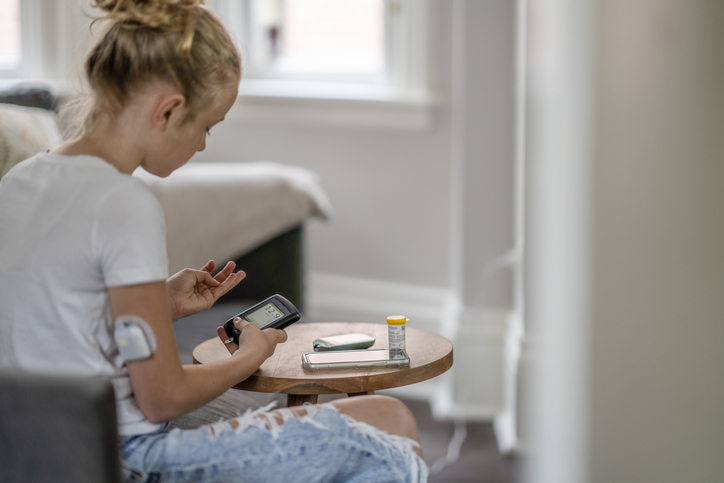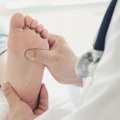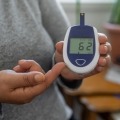How Tech and Its Disparities Impact Diabetes Distress
By Andrew Briskin
 How does technology shape the experiences of those with diabetes? From access to healthcare to data collection, the advances of the digital age have left a significant impact on those dealing with diabetes distress.
How does technology shape the experiences of those with diabetes? From access to healthcare to data collection, the advances of the digital age have left a significant impact on those dealing with diabetes distress.
In a Feb. 25 morning session at the ATTD 2023 annual conference, experts gathered to address a difficult yet critical topic – diabetes distress, self-harm, and how technology can potentially limit the mental health impact of daily diabetes management.
Dr. Lori Laffel, chief of the Pediatric, Adolescence, and Young Adult Section at Joslin Diabetes Center, pinpointed some of the most common reasons for distress, as reported by people with diabetes. These factors include, but are not limited to:
-
Constant management tasks, taking measurements, and healthcare appointments
-
Worries about complications, both short and long-term
-
Diabetes stigma, or feeling shame or blame about the condition
-
Concerns around growth, development, puberty, pregnancy, or aging
-
Skin use – scar tissue buildup, infusion sites, adhesive allergies, etc.
-
Cost of supplies and medications (more on this below)
“The things that emerged as associated with distress were a fear of the future,” Laffel said. “In that fear was significant worry about cost. Adolescents and young adults, especially when thinking about their future careers, have to think about their employers health insurance, how to make enough money to afford care, and getting stuck in a job they didn’t really want, resulting in more distress.”
Laffel discussed results from a clinical trial (PAID-Peds) that surveyed teens with type 1 diabetes over 18 months. Results showed that in general, lower levels of diabetes distress were associated with lower A1C, higher income, higher resilience, and more social interaction and support.
However, in some cases, lower A1C and greater time in range were actually associated with higher distress levels.
Laffel suggested two possibilities for this, asking, “Are people worried about continuing to cover the cost of supplies to maintain their glucose control, or is diabetes management taking time away from enjoyable activities and other social interactions?”
Laffel shared her involvement with the HAPPY T1D program, a program to promote healthy problem-solving strategies for people with type 1 diabetes. She advocates for a precision medicine approach, or a management strategy that is tailored to each individual.
“Diabetes is challenging to manage,” Laffel said. “There is no one-size-fits-all approach, and we hope to help people develop skills that are tailored to their unique lifestyle. HAPPY T1D is designed to build on existing problem-solving skills and management routines to reduce diabetes distress and improve A1C.”
The conversation then shifted to a more tech-specific focus, and how technology might help to curb troublesome realities about rates of self-harm among people with diabetes.
“The risk of suicide and self-harm among people with diabetes, both type 1 and type 2, is significantly higher than in the general population,” said Katharine Barnard-Kelly, a renowned psychologist and chair of the FDA’s RESCUE Global Collaborative Committee to reduce self-injury and suicide by people with diabetes. “On top of this, the numbers we report on stress and suicidal thoughts are likely to be underestimated, because of how difficult it is to identify.”
Barnard-Kelly highlighted the potential of integrated technology, like continuous glucose monitors (CGM), pens, or pumps, to alleviate distress. Devices can be customized for each individual, have shown to improve time in range, and can connect people with their family and care team. However, oftentimes people have a poor user experience, devices are expensive and can seem overly complicated, and constant alarms lead to more stress.
Because different people respond differently to diabetes technology, Barnard-Kelly supports a precision approach and hopes providers integrate devices effectively with people’s lifestyles and medications, while not overlooking mental health challenges. “The mental burdens [of diabetes] remain under-appreciated, and must be considered routinely alongside physical outcomes,” she said.
Concluding the discussion, Marissa Town, clinical director for Children With Diabetes, discussed the most important factors reported by people with diabetes when choosing the right technology for them. Town highlighted that while there is no magic formula, people choose devices based on how comfortable they are to wear, which devices they are aware of, allergies to adhesives, body size and availability of insertion sites, and safety, reliability, and ease of use.
Town also mentioned, however, that cost and insurance coverage was the most significant concern when choosing technology. “The first question many people ask [when starting technology] is: what does my insurance cover?” she said. “This greatly limits the ability to choose, and contributes to stress about out-of-pocket costs and financial burden.”
In many cases, healthcare providers might also be a barrier. Town shared several testimonials, as well as personal experiences from her life (Town lives with T1D), where providers felt that their patients had to “earn” technology by first meeting a specific A1C. Other people may not have been offered technology to begin with, unaware of the options available.
“I hope this concept is outdated, because this makes no sense,” Town said. “The goal is to get people to their targets and improve their quality of life as quickly as possible, so they should not have to ‘earn’ technology. Offering technology to all patients at diagnosis helps get rid of any implicit biases that providers might have.”
Town urged her colleagues to offer tools like CGM to all their patients, and for people with diabetes to feel they can speak up and advocate for access to diabetes tech.








